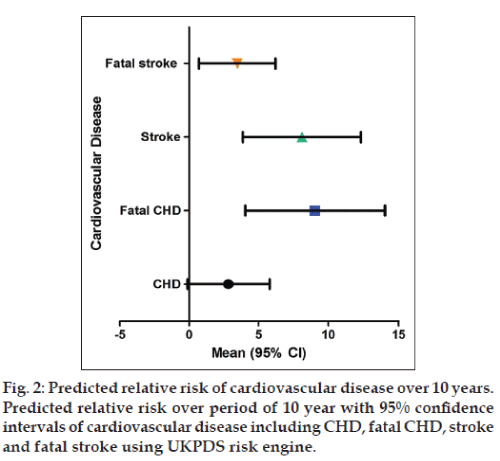
26,27 Cholesterol measurements were within the limits for accuracy of the lipid standardization program of the Centers for Disease Control and Prevention (CDC) in Atlanta, Ga, but when compared with the CDC reference laboratory in the United Kingdom were 2.5% lower and 1.2% lower (total cholesterol and HDL cholesterol, respectively). 25 HbA 1c was measured by high-performance liquid chromatography (Biorad Diamat Automated Glycosylated Hemoglobin Analyzer), nondiabetic range 4.5% to 6.2%. Patients had blood pressure and biochemical measurements, including hemoglobin (Hb) A 1c, lipid, and lipoprotein fractions recorded at diagnosis of diabetes, at the end of a 3- to 4-month dietary run-in period, and then at annual intervals. Mean of values taken 1 and 2 years after diagnosis of diabetes 25,26 The model presented here is specifically designed for a type 2 diabetic population using variables available in routine clinical practice, including duration of diabetes and age at diagnosis.Ĭharacteristics of Subjects: Mean±sd, or n (Percentage) n (%)ĪF indicates atrial fibrillation T:H, ratio of total:HDL cholesterol. 24ĭata from the 5102 patients with type 2 diabetes in the UK Prospective Diabetes Study (UKPDS) provide an opportunity to derive a diabetes-specific model for risk of stroke. 16–19 The majority of the models currently in use for predicting vascular risk in individuals with diabetes use equations from the Framingham study, 12,20–23 which included only 337 individuals with diabetes out of 5573. 15 Charts and computer programs have been developed to make calculations in the course of a patient-doctor visit, but typically use coronary heart disease risk as a surrogate for total cardiovascular risk. Tools for calculation of cardiovascular risk are now frequently used to assist decisions about clinical management for both individuals and populations. 11–13 In the diabetic population, elevated total cholesterol, decreased HDL cholesterol, and elevated triglycerides have all been identified as risk factors for stroke. 1–9 In the general population, the relationship between lipid levels and stroke is complicated by an inverse association between total cholesterol and hemorrhagic stroke, 10 but depressed high-density lipoprotein (HDL) cholesterol, elevated ratio of total to HDL cholesterol (T:H), and elevated triglycerides have all been reported to increase overall risk of stroke. 1,2 Risk factors for increased risk of stroke in the type 2 diabetic population include elevated blood pressure, smoking, age, male sex, atrial fibrillation (AF), and hyperglycemia.

In people with type 2 diabetes, there is a 2- to 5-fold increased risk for stroke compared with those without diabetes. The use of the model is illustrated with a hypothetical study power calculation.Ĭonclusions- This model forecasts the absolute risk of a first stroke in people with type 2 diabetes using variables readily available in routine clinical practice. Not included in the model were body mass index, hemoglobin A1c, ethnicity, and ex-smoking status. Results- Variables included in the final model were duration of diabetes, age, sex, smoking, systolic blood pressure, total cholesterol to high-density lipoprotein cholesterol ratio and presence of atrial fibrillation. Diagnostic plots were used to compare survival probabilities calculated by the model with those calculated using nonparametric methods. Model fitting was carried out by maximum likelihood estimation using the Newton-Raphson method. Methods- During 30 700 person-years of follow-up, 188 first strokes (52 fatal) occurred. We developed mathematical models to estimate the risk of a first stroke using data from 4549 newly diagnosed type 2 diabetic patients enrolled in the UK Prospective Diabetes Study.

Relative risks have been examined in earlier work, but there is no readily available method for predicting the absolute risk of stroke in a diabetic individual. Customer Service and Ordering Informationīackground and Purpose- People with type 2 diabetes are at elevated risk of stroke compared with those without diabetes.Stroke: Vascular and Interventional Neurology.Journal of the American Heart Association (JAHA).Circ: Cardiovascular Quality & Outcomes.Arteriosclerosis, Thrombosis, and Vascular Biology (ATVB).


 0 kommentar(er)
0 kommentar(er)
